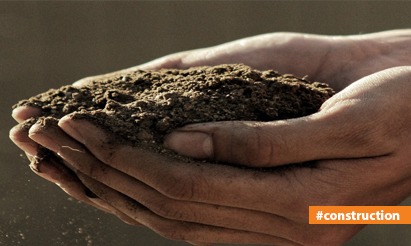Impact of Concrete Bleeding on Project Integrity!
In the intricate world of construction, where strength and durability are the bedrock of any project, a subtle foe often lurks beneath the surface—concrete bleeding. This seemingly benign occurrence, often dismissed or overlooked, has the potential to weaken a project from within. In this blog, we embark on a journey to understand the phenomenon of concrete bleeding, exploring its mechanisms, the repercussions it inflicts on project integrity, and how vigilant construction practices can thwart its insidious influence.
Decoding Concrete Bleeding:
Concrete, the lifeblood of construction, undergoes a fascinating metamorphosis from a fluid mix to a solid structure. However, within this transformation lies the possibility of bleeding—a phenomenon where excess water rises to the surface as the concrete sets. This separation of water from the mixture may seem innocuous, but its implications can reverberate through the very core of a construction project.
Mechanisms Behind Concrete Bleeding:
- Excessive Water Content:
- One of the primary culprits behind bleeding is an overabundance of water in the concrete mix. When the water-to-cement ratio is too high, the surplus water tends to migrate to the surface during the setting process.
- Fine Aggregate Issues:
- The gradation of fine aggregates within the concrete mix plays a pivotal role. An imbalance in fine particle distribution can slow down their settling, allowing water to rise and form a layer on top.
- Impact of Admixtures:
- While water-reducing admixtures, such as superplasticizers, enhance workability, an excessive dose can exacerbate bleeding. The increased flowability enables water to move more freely, rising to the surface.
- Mix Proportioning Challenges:
- Inadequate proportions of cement to aggregates can upset the delicate balance needed for a stable mix. Poor mix design can intensify the effects of bleeding.
- Environmental Influences:
- External factors, such as high temperatures and low humidity, can hasten the evaporation of water from the surface. This rapid evaporation concentrates water at the top, contributing to bleeding.
Consequences of Concrete Bleeding:
- Diminished Strength and Durability:
- The dilution of cement content due to bleeding compromises the concrete’s compressive strength and overall durability. This can lead to long-term structural vulnerabilities.
- Surface Imperfections:
- As the water rises and evaporates, it leaves behind voids and pits on the concrete surface. This uneven texture detracts from the aesthetics and quality of the finished project.
- Segregation Threat:
- Severe bleeding may result in the separation of coarse aggregates from the mortar. This segregation weakens the structural cohesion of the concrete, particularly at the surface.
- Cracking Hazards:
- Excess water at the surface during bleeding contributes to cracking as the concrete dries and shrinks. These cracks can compromise the integrity of the structure.
Guarding Against Concrete Bleeding:
- Precise Mix Design:
- Optimize the concrete mix by ensuring a balanced water-to-cement ratio and appropriate gradation of aggregates. A well-proportioned mix forms a sturdy foundation against bleeding.
- Water Content Management:
- Exercise caution with water content, avoiding excessive use. The judicious application of water-reducing admixtures maintains workability without promoting bleeding.
- Effective Curing Techniques:
- Implement proper curing practices, such as covering the concrete with wet burlap or applying curing compounds. This minimizes evaporation, ensuring even hydration.
- Environmental Awareness:
- Monitor ambient conditions, especially in hot and dry climates. Implement measures to mitigate rapid evaporation, such as shading the concrete or utilizing windbreaks.
Concrete bleeding, the stealthy intruder in the construction realm, demands our attention and understanding. Its subtle infiltration can compromise the very essence of a project—its strength, durability, and visual appeal. By unraveling the mechanisms behind bleeding and adopting vigilant construction practices, we fortify our projects against this silent adversary, ensuring that the concrete foundations we lay stand resilient and unwavering against the test of time.
Disclaimer: The views expressed above are for informational purposes only based on industry reports and related news stories. PropertyPistol does not guarantee the accuracy, completeness, or reliability of the information and shall not be held responsible for any action taken based on the published information.




